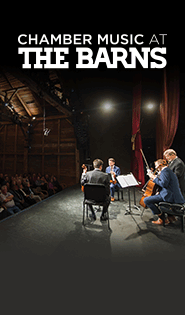New Simon commission rounds out NSO program centered on American folk song

Eugene Rogers conducted the National Symphony Orchestra Saturday night at the Kennedy Center. Photo: Sudeep Studio
The National Symphony Orchestra offered a pre-season concert Saturday night, a chance to warm up the Kennedy Center Concert Hall. Eugene Rogers, artistic director of the Washington Chorus, took the podium for a program he described as “echoes of America,” on the theme of this country’s folk song and distinctive melodies. The evening wove together tunes from the rich tapestry of American voices from all backgrounds.
Jessie Montgomery described her piece Banner as a “rhapsody” on that quintessentially American song, our national anthem. She composed it in 2014, for the 200th anniversary of Francis Scott Key penning the lyrics of The Star-Spangled Banner, with the idea of mixing the tune with other melodies representing a more diverse modern America than that known by Key. Bits of songs appeared in the solo string quartet led by assistant concertmaster Ricardo Cyncynates, along with a surprise solo for double-bass.
Some unexpected techniques added unusual colors, most notably air blown through the woodwind instruments to create a wind effect. Foot stamps from the musicians began a march section, reflected through the prism of the black drumline tradition. More strident music produced the sense of a conflict, with echoes of the anthem’s melody at the line “the bombs bursting in air,” finally driving to a confident conclusion.

Morris Robinson sang selections from Copland’s Old American Songs Saturday night, Photo: Lawrence Brownlee
Bass-baritone Morris Robinson joined the orchestra for three selections from Aaron Copland’s Old American Songs. When the singer tried to advance the tempo of “Zion’s Walls,” Rogers seemed to have trouble keeping the NSO in lockstep, one example of where his unclear beat caused some minor issues. Robinson negotiated the high range of “Simple Gifts” and “At the River” with elegant tone, his strong projection and clear diction carrying the vocal part through the hall.
Copland’s Suite from Billy the Kid, the 1938 ballet, added cowboy songs and Mexican dances to the mix, a musical representation of the American southwest. Rogers coordinated this score, including its many metric changes, with elegant efficiency, so that beautiful solos from flute, piccolo, horn, and especially trumpet all lined up precisely.
The “Prairie Night” section stood out for the delicate tapestry of strings and winds, ornamented by nostalgic, tinkling harp. After the macabre “Celebration (After Billy’s Capture)” section, with its circus-like calliope textures, a massive swell of the full orchestra marked the return of the “Open Prairie” music after the death of the title character.

Refik Anadol’s art installation “Dvořák Dreams.” Photo: WCR
Intermission offered the chance to view Dvořák Dreams, a new data art installation by Refik Anadol on display in the plaza leading to The Reach. Artificial intelligence processes Dvořák’s music into surreal images via an enormous box with a 32-foot square screen. Music accompanying the work evokes “the essence of the composer”—meaning that it sounds nothing whatsoever like Dvořák. The exhibit continues through September 24.
The Washington Chorus, the ensemble led by Rogers, took the stage after intermission for the final work, Carlos Simon’s oratorio Here I Stand: Paul Robeson, premiered by the Oakland Symphony earlier this year. (Here I Stand is the title of Robeson’s autobiography.) Co-commissioned by the NSO, the piece is the latest example of the orchestra’s continuing advocacy of Carlos Simon, who serves as the Kennedy Center’s composer-in-residence through the 2026-2027 season.
Before undertaking a successful career in opera, Morris Robinson played collegiate football, something he has in common with Paul Robeson. The libretto by Dan Harder telescopes the many phases of Robeson’s life into a short space: actor, singer, and civil rights activist blacklisted in the 1950s by the House Un-American Activities Committee.
Simon’s music added the last ingredient to the concert’s melodic potpourri, by opening with the protest song “I Dreamed I Saw Joe Hill Last Night” (a Robeson staple). Simon added other Gospel notes with partial quotations of other tunes that made Biblical comparisons to Robeson’s role in the black community, including “Joshua Fit the Battle of Jericho” and “Go Down, Moses.”
Robinson fulminated on the solo vocal line, with the help of a microphone, incarnating the indignation, guilt, and resignation of Robeson as he looks back at his life during his final concert tour. Robeson, whose father ran away from enslavement as a teenager, rose to international prominence and used that fame to fight for the cause of equal rights. Harder’s libretto laid out the struggle against racism in America with unvarnished plainness, though the text turns at times to cheesy sentimentality. Simon’s decision to set many of the lines merely with speech added to the sense of a lightweight occasional piece, like Copland’s Lincoln Portrait.
Despite these shortcomings, the closing section of the work, “Apotheosis,” had an undeniable impact. Drawing on the call-and-response format of a Gospel anthem, Simon wove in strains of the spiritual “I’ve Been Changed.” The amassed members of the Washington Chorus grew in power to staggering volume, and Robinson eventually invited the audience to join in the refrain, before a potent, unaccompanied final solo riff with a towering high note. Under the guidance of Rogers, this new work rounded out the evening’s nuanced portrait of American song, ending somewhat predictably on a hopeful major triad.
More of Carlos Simon’s music is planned for the official gala opening of the NSO season, with conductor Gianandrea Noseda and pianist Yunchan Lim, 7 p.m. September 28. kennedy-center.org



